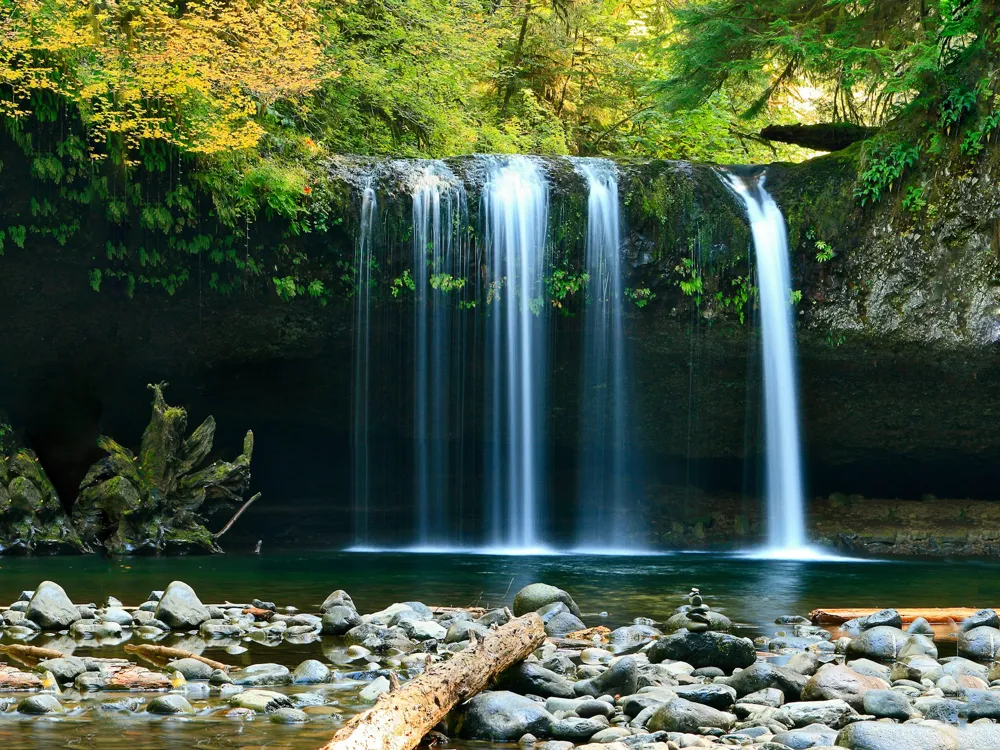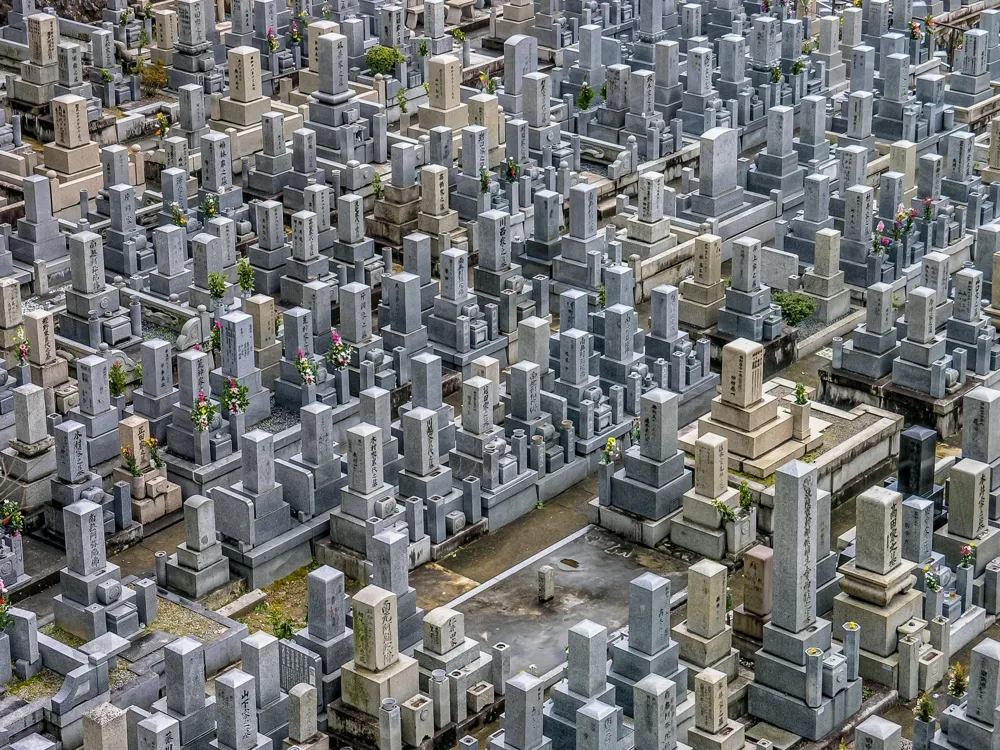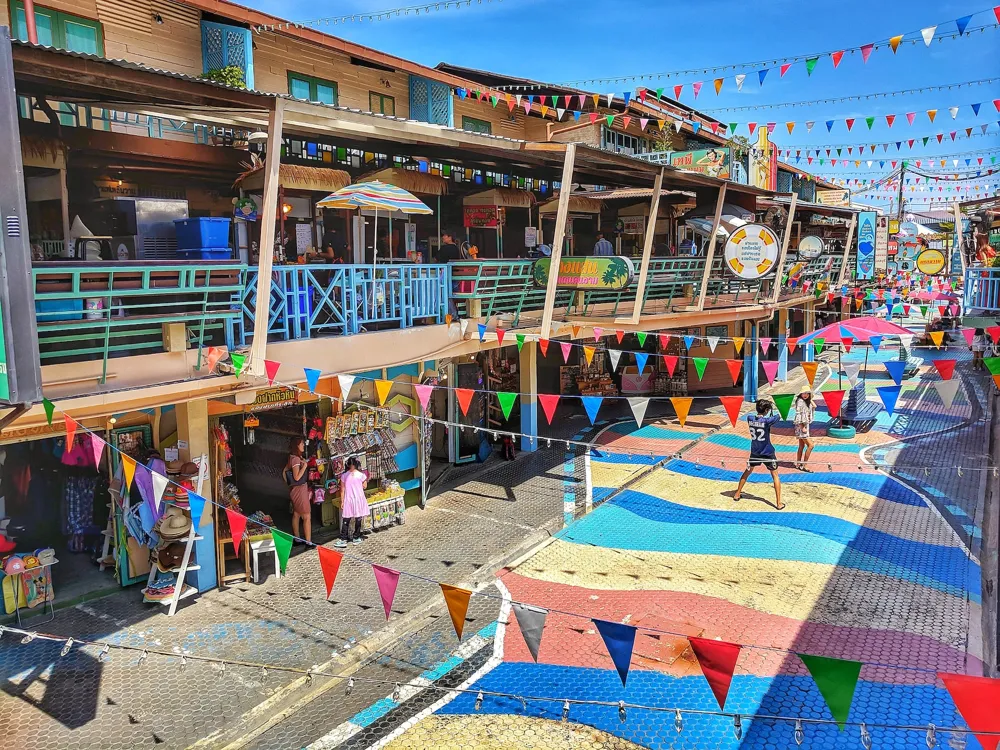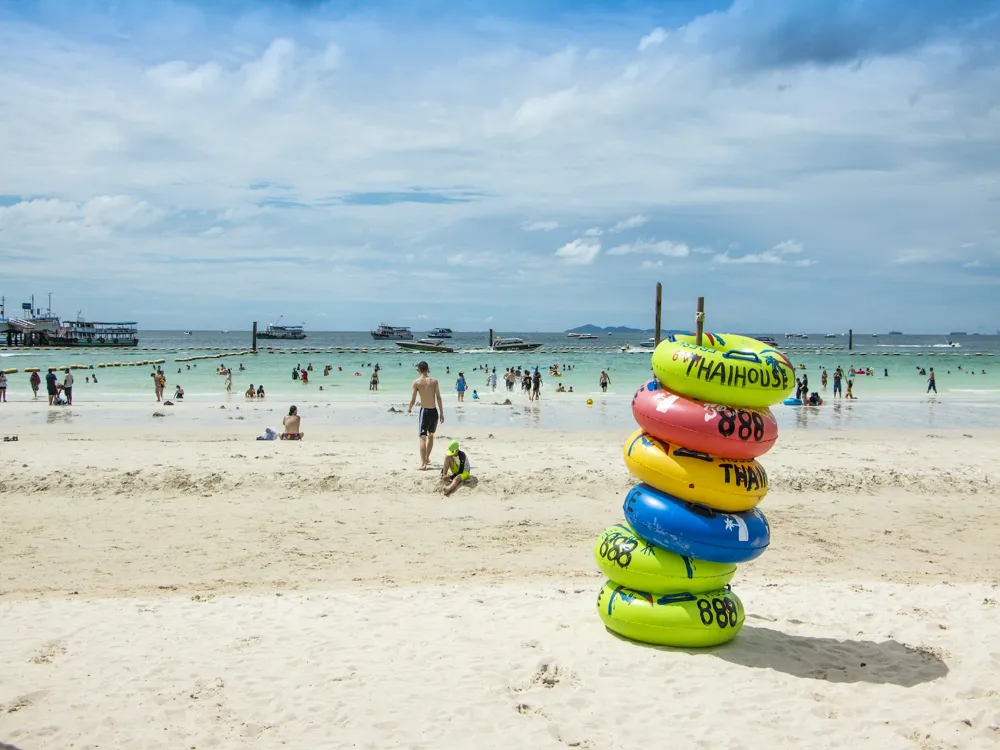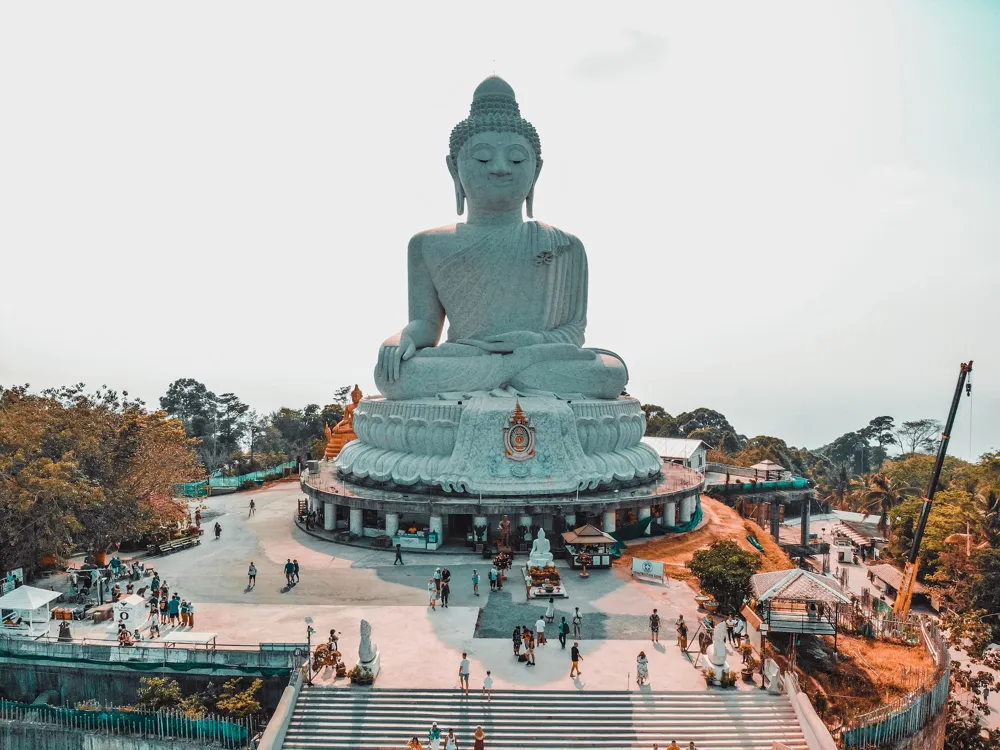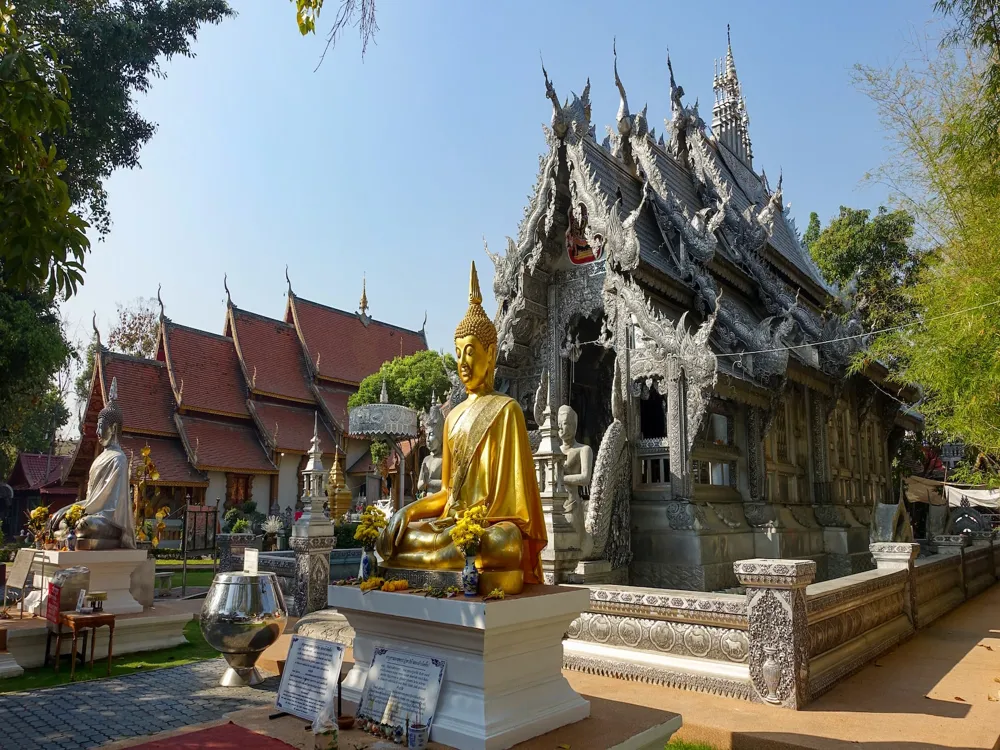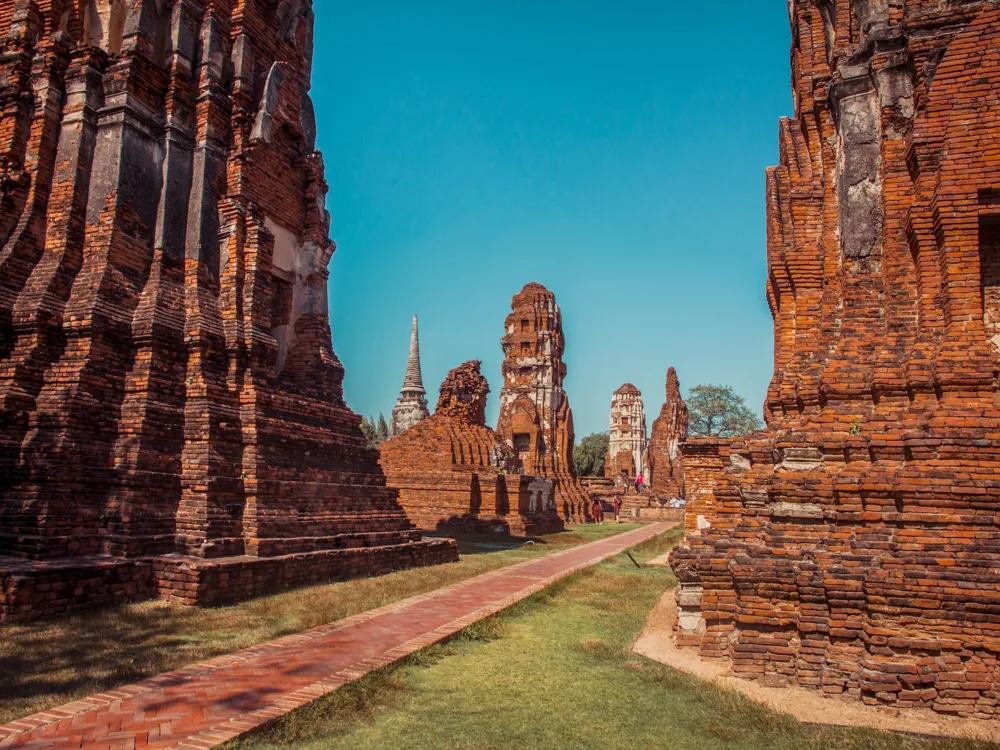The Kanchanaburi War Cemetery, also known as the Don-Rak War Cemetery, is a poignant reminder of the brutal history during the construction of the infamous Burma Railway, better known as the “Death Railway,” during World War II. Located in the town of Kanchanaburi, Thailand, it is the largest of the war cemeteries in the area, serving as a final resting place for over 6,000 Allied prisoners of war (POWs), primarily British, Australian, Dutch, and American, who perished during the railway's construction. The cemetery is situated at the site where the former Kanchanaburi Prisoner of War Camp once stood. This camp was one of the numerous camps along the railway line where POWs were held in captivity and forced to work under inhumane conditions. The construction of the Burma Railway, intended to support Japanese forces in Burma, was an enormous undertaking, involving the harsh forced labor of POWs and Asian laborers, leading to a high death toll due to malnutrition, harsh working conditions, and diseases. The Kanchanaburi War Cemetery is a place of remembrance and reflection, maintained with utmost care. It stands not only as a burial ground but also as a memorial to the resilience and fortitude of those who worked and died in such harrowing circumstances. The cemetery's immaculate condition and peaceful atmosphere offer a stark contrast to the grim history it represents, providing visitors with a space to contemplate and pay respects to the fallen soldiers. The Kanchanaburi War Cemetery's design reflects both the cultural diversity of those it commemorates and the serenity of a final resting place. The cemetery is laid out in symmetrical plots, with rows of headstones made of pristine Portland stone, each inscribed with the name, regiment, and date of death of the soldier it commemorates. The uniformity and alignment of the headstones create a visually striking and solemn atmosphere. The entrance to the cemetery is marked by a prominent archway, leading to a meticulously landscaped garden. The garden, filled with tropical plants and flowers, adds a sense of tranquility and natural beauty to the site. Central to the cemetery is the Cross of Sacrifice, a common feature in Commonwealth war cemeteries, designed by Sir Reginald Blomfield. The cross, typically made of limestone or granite, stands as a symbol of remembrance and respect for those who have lost their lives in war. Additionally, the cemetery includes a memorial building containing a register and information about the POWs buried there. This building also serves as a place for visitors to learn more about the historical context of the cemetery and the individual stories of those interred. As a site of remembrance, visitors are expected to dress modestly. Avoid wearing revealing or flashy clothing out of respect for the solemn nature of the cemetery. The cemetery is a place of quiet reflection. Visitors should maintain a respectful silence, avoid loud conversations, and turn off mobile phones or other noisy devices. Photography is permitted, but visitors should avoid posing for photographs in front of the headstones or engaging in any behavior that might be considered disrespectful. Take time to visit the memorial building and read the information available to gain a deeper understanding of the cemetery's historical significance and the stories of those buried there. Kanchanaburi War Cemetery is accessible from Bangkok, the capital city of Thailand. The most convenient way to reach Kanchanaburi is by road, either by car or bus. The journey takes approximately 2-3 hours. Visitors can also take a train from Bangkok’s Thonburi Railway Station to Kanchanaburi Station, followed by a short taxi or tuk-tuk ride to the cemetery. The train journey offers scenic views of the countryside and is a popular choice for those wishing to experience the local landscape. Read More:Overview of Kanchanaburi War Cemetery
Architecture of Kanchanaburi War Cemetery
Tips When Visiting Kanchanaburi War Cemetery
Dress Respectfully
Be Mindful of the Surroundings
Photography Guidelines
Learn About the History
How To Reach Kanchanaburi War Cemetery
Kanchanaburi War Cemetery
Kanchanaburi
₹ 24,500 onwards
View kanchanaburi Packages
Weather :
Tags : Cemetery
Timings : 8 AM to 5 PM
Time Required : 30 mins to 1 hour
Entry Fee : No Entry Fee
Planning a Trip? Ask Your Question
Kanchanaburi Travel Packages
View All Packages For Kanchanaburi
Top Hotel Collections for Kanchanaburi

Private Pool

Luxury Hotels

5-Star Hotels

Pet Friendly
Top Hotels Near Kanchanaburi
Other Top Ranking Places In Kanchanaburi
View All Places To Visit In kanchanaburi
View kanchanaburi Packages
Weather :
Tags : Cemetery
Timings : 8 AM to 5 PM
Time Required : 30 mins to 1 hour
Entry Fee : No Entry Fee
Planning a Trip? Ask Your Question
Kanchanaburi Travel Packages
View All Packages For Kanchanaburi
Top Hotel Collections for Kanchanaburi

Private Pool

Luxury Hotels

5-Star Hotels

Pet Friendly







/bridge-on-the-river-kwai-death-railway-bridge-slider-1.webp)


